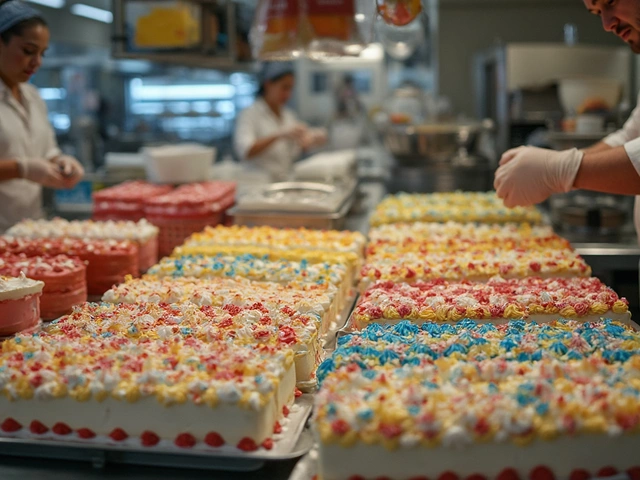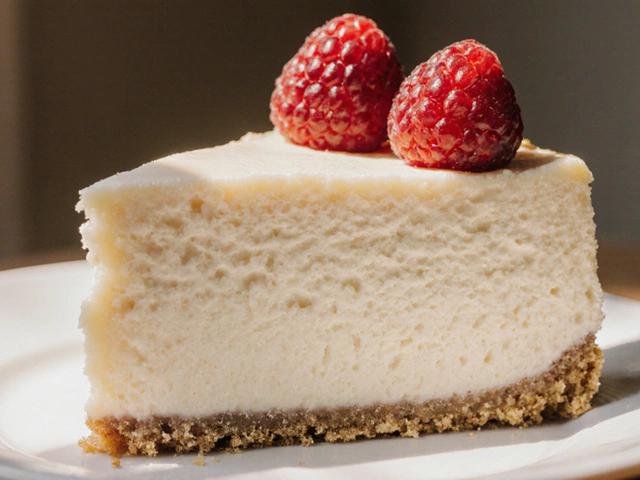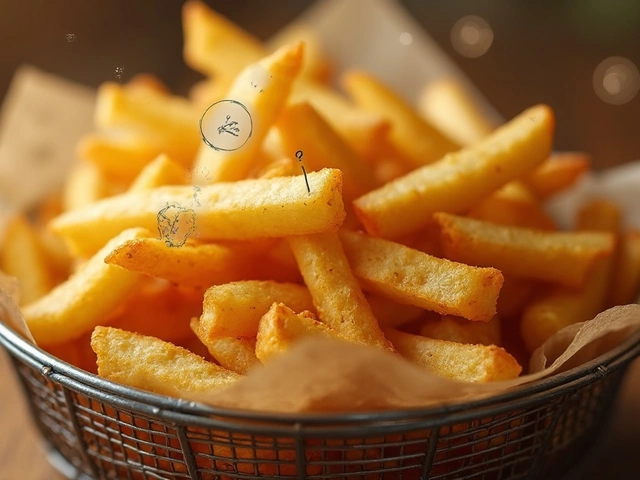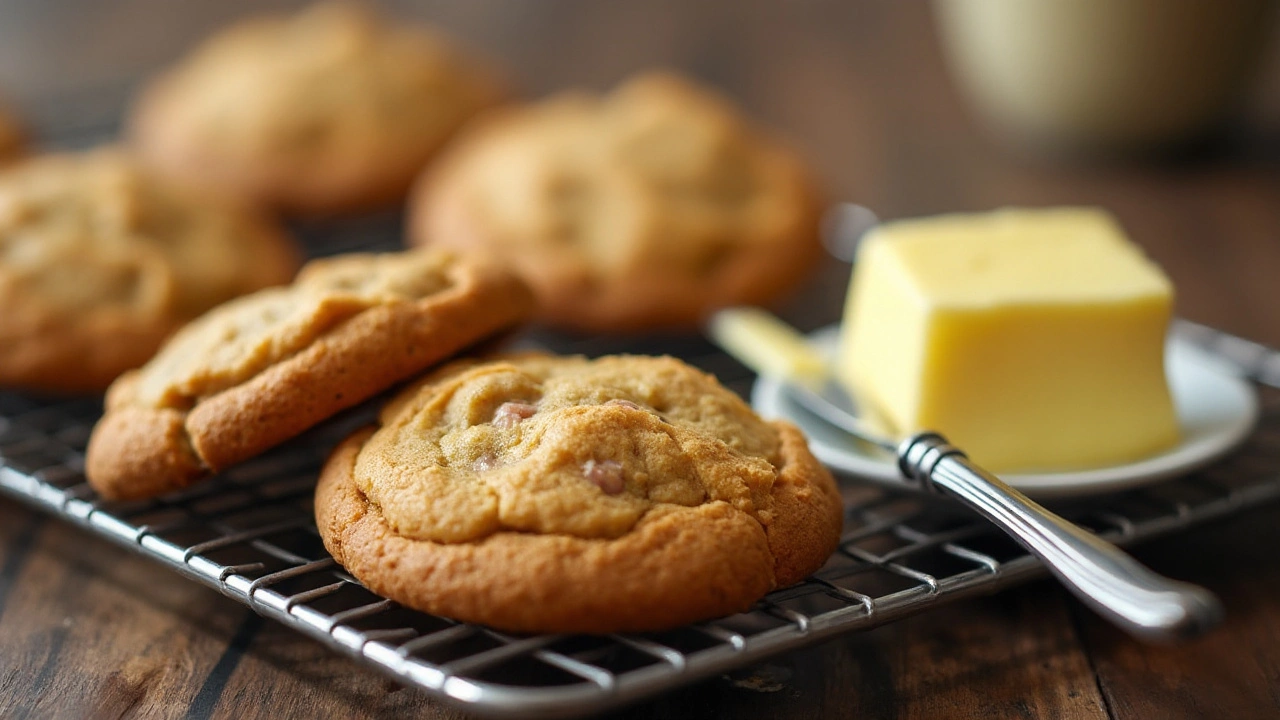
Butter, a staple ingredient in cookie recipes, is more than just a fatty friend that makes everything taste richer. It's an essential player in defining the texture, flavor, and even the look of your cookies. Its unique properties transform a simple mix of flour and sugar into a delightful treat that's hard to resist.
Throughout this article, we'll explore the science of butter in the baking process, discover why it is so beloved in cookie recipes, and how its qualities can be harnessed for different outcomes in your sweet creations. From creamy indulgence to crunchy delights, choosing the right butter and using it correctly is key to unlocking the perfect cookie. Let’s dive into the buttery details that make each bite unforgettable.
- The Science Behind Butter in Baking
- Butter's Impact on Texture and Flavor
- Types of Butter and Their Uses
- Tips for Using Butter in Cookies
The Science Behind Butter in Baking
Butter plays a crucial role in the art of baking cookies, more than many might realize. This golden block of dairy goodness is not just about flavor; it has a myriad of functions that begin the moment it is mixed with sugar. When creamed with sugar, butter helps to incorporate air into the dough, creating tiny pockets that contribute to the cookie's rise and lightness. This aeration is key to achieving a fluffy cookie, and without it, one might end up with a dense, cake-like dessert rather than the perfect cookie. The relationship between butter and sugar is just the beginning of the reaction needed for great homemade cookies.
As cookies bake, the butter melts, creating steam that helps the dough expand. This expansion translates to the characteristic shape and size of a delicious cookie. Butter also aids in browning. As the cookies heat, the sugars in the dough caramelize, leading to that desirable golden crust that signals a cookie is ready. The role butter plays in this process cannot be understated; it determines the cookie's final texture, crispness, and taste, making it an indispensable ingredient.
According to Harold McGee in his book On Food and Cooking, "Butter is composed of about 80% butterfat, which gives it the texture we love in baked goods, but it's the water content that converts to steam during baking, making things light and tender."
Saturated and Unsaturated Fats
Within butter, there is a delicate balance between saturated and unsaturated fats. These fats are crucial during the baking process, influencing the way the butter integrates with other ingredients. Saturated fats in butter maintain their structure at room temperature and during baking, which helps in holding the cookie together once it cools. The unsaturated fats contribute to spreading during the bake, which is why cookies often have that alluring flat and spread shape out when baked properly. This balance is what makes butter a superior choice over margarine or other substitutes, as these often lack the same chemical makeup that allows butter to perform its magic.
Water content in butter is another factor not to be overlooked. Butter’s water evaporates as the cookies bake, which aids in leaving a light, flaky texture that is highly desirable in baking circles. The evaporation of water is what lends a chewy center with crisp edges, a hallmark of many beloved cookie recipes. In European styles of baking, where butter is naturally more water-free, the result is often a more delicate structure, preferred in fine pastries and delicate cookies.
- Butter in cookies optimizes flavor development during baking.
- Its fat content is integral to texture, impacting both softness and crispness.
- The interplay between butter’s water and fat creates lift through steam production.
- Selection of butter impacts taste; some prefer unsalted butter for precise control of salt levels.
Recognizing butter's role in the intricate ballet of baking can deepen one's appreciation for this simple ingredient. As bakers, understanding the science allows for more creativity and precision in cookie-making. Butter acts as a unifying force in recipe execution, a bridge between structure and flavor, showing that it is much more than just an ingredient – it’s a necessity.

Butter's Impact on Texture and Flavor
When it comes to baking cookies, butter plays an indispensable role that goes beyond its rich, satisfying taste. At the heart of its influence lies a fascinating interplay of chemistry. As cookies bake, the water content in butter turns into steam, creating little pockets of air within the dough. This reaction not only aids in leavening but also contributes to that cherished light and tender crumb that many cookie lovers crave. Imagine biting into the silky softness of a warm cookie, knowing it owes much of its delightfulness to well-chosen butter. The fats in butter coat the flour's gluten strands, making cookies more tender by inhibiting their development when mixed. This process helps differentiate a perfectly soft cookie from a tough one.
The magic doesn't stop there. In terms of flavor, butter is a champion. It imparts a creamy richness that elevates even the simplest cookie recipe. The gentle nutty aroma wafting through the kitchen as cookies bake is partly due to butter's browning process, known as the Maillard reaction. This complex interplay between amino acids and reducing sugars in butter under heat creates a plethora of flavor compounds, increasing the depth and inviting notes of caramel and toffee to your cookies. It's no wonder that baking enthusiasts argue over using salted or unsalted butter, each adding a different flavor dimension. While recipes usually specify unsalted to control the salt level precisely, salted can sometimes provide a nostalgic, savory hint that some bakers swelled about in childhood cookies.
Consider the words of Alice Waters, a respected American chef and food activist, who said,
"Butter and love are the two primary ingredients."Her poetic observation underscores butter's vital role in infusing delightful flavor into both the food and the experience of enjoying homemade cookies. To balance flavor and texture optimally, bakers often experiment with butter temperatures. Cold butter is ideal for flaky, layered cookies like shortbread, while softened butter, when creamed with sugar, adds volume and aids in achieving a delightful airy structure as it traps air in between fat and sugar. Melting butter, on the other hand, decreases air bubbles, which can result in denser cookies with a chewy texture. Each method of butter incorporation results in entirely different cookie-eating experiences.
Should you wish to dabble with various types of butter, there's joy in experimenting with alternatives like European-style butter, renowned for its higher fat content. This variety can bring a richer flavor to your cookies, though it's slightly pricier than regular butter. Yet, many bakers find the decadent taste worth the splurge, as it contributes to a golden color and luxuriant flavor profile. While traditional cows milk butter reigns supreme in most cookie recipes, adventurous bakers might try substitutes like clarified butter or ghee, adding a nutty complexity suitable for specific, savory-leaning cookie innovations. However, always keep in mind the role milk solids play in achieving certain textures and flavors when opting for clarified versions.
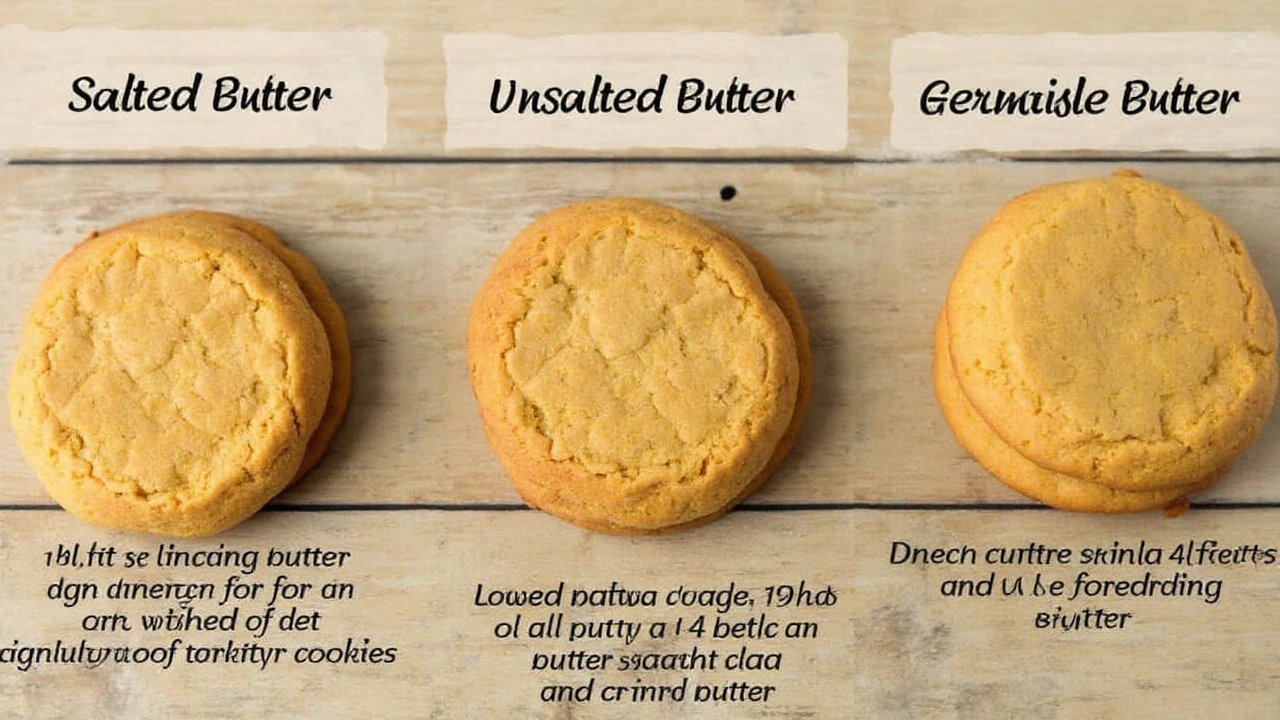
Types of Butter and Their Uses
When it comes to baking homemade cookies, not all butters are created equal. The type of butter you choose can significantly impact your cookie's texture and taste. Let's start with unsalted butter, which is the darling of many bakers. Without added salt, it allows you better control over the seasoning in your recipe, making it ideal for delicate cookie flavors where precision is key. When a recipe calls for butter, it's usually implying unsalted unless stated otherwise. Then we have salted butter, which contains about 1/4 teaspoon of salt per stick. This variety is great for savory recipes or when a hint of saltiness enhances the sweetness of your cookie blend, adding a subtle contrast that heightens flavors.
Next, there's European-style butter, known for its higher fat content and lower water percentage. This rich, creamy butter can add both a luscious texture and a deeper flavor to your cookies, often making them indulgently soft and melt-in-your-mouth delicious. European butter can be slightly more expensive, but the quality it brings can be worth the splurge for special occasions or when you want to impress with your baking. It's fascinating, too, to look at how the grass-fed cow milk used for these butters often results in a product that's more golden in color due to higher beta-carotene levels.
Clarified Butter and Ghee
Diversifying further, you might consider using clarified butter or ghee, which are particularly interesting for their nutty, aromatic flavors. These kinds of butter have been cooked to remove water and milk solids, concentrating the buttery essence. While it's not commonly used as a primary butter source in cookie baking due to its intense richness, adding a bit can impart an exotic note. Clarified butter's lack of water content can make for crisper cookies, and using it in moderation can open a whole new dimension of flavors. A tip for using clarified butter is to ensure it's incorporated with some regular butter to maintain the right balance in your dough texture.
"Butter is an emulsifier—it helps products hold water—so it helps turn sticky dough into smooth dough," says Sally McKenney, an expert baker known for creating approachable and delectable homemade treats.
For health-conscious bakers, there's also the option of plant-based butters made from ingredients like nuts, soy, or coconut. These can serve as a fine substitute for dairy butter, though the flavor and texture might differ notably from what traditional butters offer. Plant-based versions can push the boundaries of traditional taste, allowing for creative experimentation while accommodating dietary restrictions. When using these alternatives, you might need to tweak your recipe slightly, as their melting behavior can adjust the cookie's spread and texture.
Butter vs. Margarine
Another point of consideration is the use of margarine, which some still reach for as a butter substitute due to its lower price point and potential benefits for those watching their saturated fat intake. While margarine can mimic the roles of butter thanks to emulsifiers and oils, it generally lacks the rich, creamy profile butter naturally provides. So, while your cookies will still turn out fine, the taste and texture might not hit quite the same homemade notes. For a purist approach to cookie-making, butter—whichever type you choose—remains the golden standard, adding magic to every crumb.
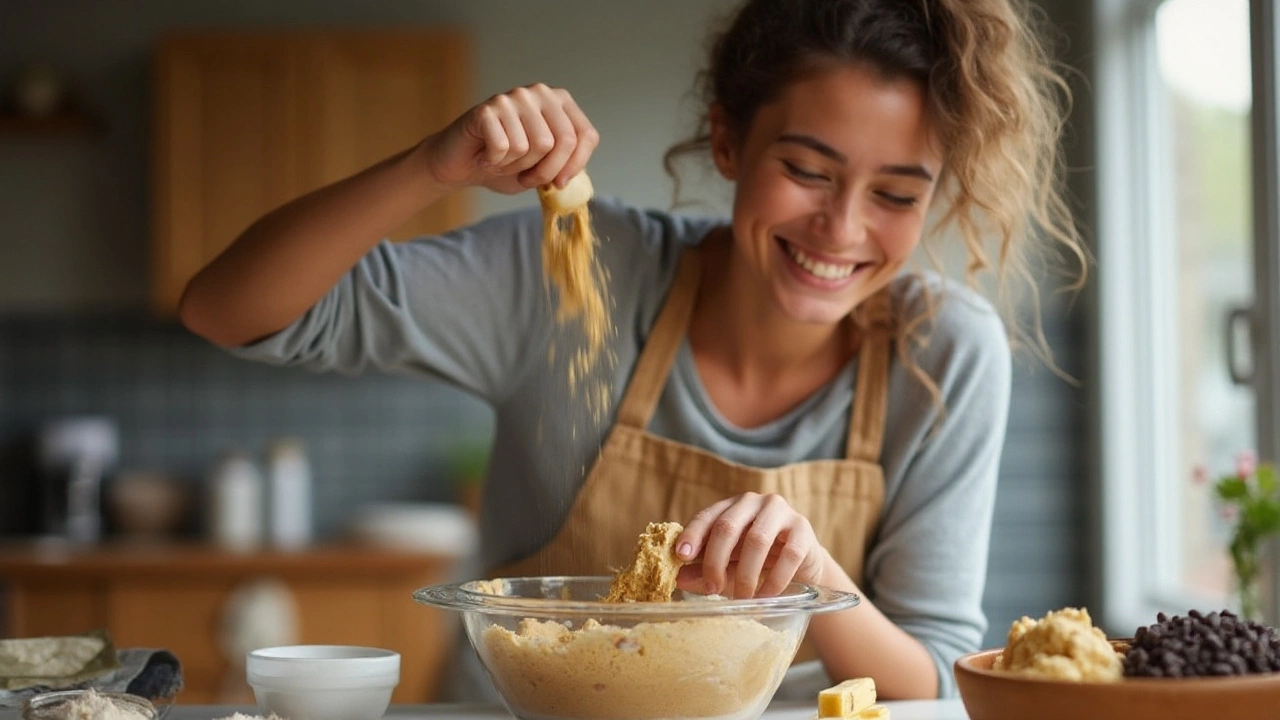
Tips for Using Butter in Cookies
When it comes to making homemade cookies, the choice and handling of butter can make all the difference. First things first, consider the temperature of your butter. If you want a chewy texture in your cookies, it's crucial to start with room temperature butter. This allows it to blend smoothly with sugar, creating a creamy base that captures air, leading to those perfectly soft centers. Leave the butter out for around 30 to 45 minutes before you begin, and it should give enough pliability without melting away.
For those who prefer a crispier bite to their cookies, a quick stint to partially melt your butter can be insightful. This technique, called browning butter, involves gently heating butter until it achieves a nutty scent and golden brown color. This adds a rich dimension of flavor that pairs beautifully with chocolate chips and nuts. Let it cool slightly before using it in your recipe to avoid excessively runny dough.
"The key to successful cookie baking is understanding how each ingredient works, especially butter," advises culinary expert Joy Wilson, famed for her innovative flavor combinations.
Let's not overlook the type of butter used. Salted or unsalted—that is often the question. While many recipes specify unsalted to control salt levels precisely, using salted butter can add an unexpected savory twist to sweet cookies. Just remember to adjust any additional salt called for in the recipe accordingly. When it comes to truly luxurious textures, European-style butter with its higher fat content often yields a richer result, perfect for those indulgent cookie atmospheres.
Incorporating Butter
Getting the most from your butter also lies in how you incorporate it into your dough. Creaming it with sugar, a step often suggested in recipes, isn't just about mixing. It's about aerating the mixture to create volume, which is key for achieving light and tender cookies. This step should not be rushed; a couple of minutes on medium speed with your mixer or a sturdy hand whisk makes a big difference.
Clever bakers also consider chilling their cookie dough. After mixing, letting your dough rest in the refrigerator for at least 30 minutes up to 24 hours can profoundly affect texture and flavor. It helps solidify the fat, preventing spread and enhancing the cookie's shape during baking. It's a step worth considering if your dough seems too soft or sticky.
| Type of Butter | Use in Cookies |
|---|---|
| Room Temperature | Chewy Cookies |
| Browned | Nutty, Rich Flavor |
| Salted | Savory Twist |
| European-style | Luxurious Texture |
The last tip might sound quaint: trust your senses. The aroma, color, and texture of the butter can guide you to your cookie nirvana. In the end, experimenting with butter and its different roles in cookie baking can bring about wonderful variations, each worth tasting and enjoying. Let the butter guide your cookie journey—experiment boldly and enjoy the sweet outcome of your culinary adventures.


